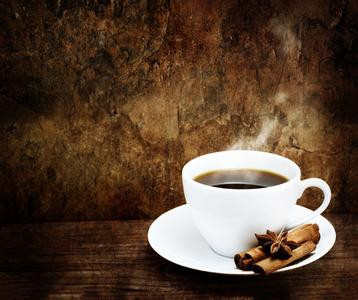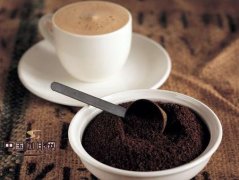There are two main kinds of coffee on the market: Arabica and Robusta.

The coffee on the market is mainly divided into two original species: Coffee Arabica and Coffee Robusta.
1. Black coffee (Black Coffee) ── directly uses coffee beans to make coffee, without adding milk, it will affect the way the coffee is drunk.
two。 White coffee (White Coffee) ── adds milk to the coffee.
3. Espresso (Espresso) ── espresso, brewed with hot water and ground into a fine coffee powder under high pressure.
4. Cappuccino ── steam pressurized espresso with frothy (or steamed) milk, sometimes with cinnamon or spices or chocolate powder as needed. Usually coffee, milk and milk foam account for 1 / 3 of each.
5. Caffe Latte ── coffee with lots of hot milk and sugar. It consists of one espresso and more than two servings of hot milk.
6. Flavored-coffee ── according to local taste, add chocolate, syrup, juice, cinnamon, nutmeg, orange blossom and other different seasonings to the coffee.
7. Caffe Mocha ── coffee is served with chocolate, milk and whipped cream, sometimes with ice cubes.
8. American Coffee (American Coffee / Americano) ── espresso with lots of hot water. Softer than regular espresso.
9. Irish Coffee (Irish Coffee) ── adds whisky to the coffee and puts cream on top.
10. Vietnamese coffee (Vietnamese Coffee) ── puts the coffee powder in a special metal brewing filter and pours it into boiling water, allowing the coffee to flow into the cup drop by drop. When the coffee is finished, add sugar or condensed milk to everyone's taste and stir before drinking.
Coffee beans
The coffee on the market is mainly divided into two original species: Coffee Arabica and Coffee Robusta.
The coffee beans of better quality and more expensive come from Arabica. It is the most cultivated coffee bean in the world, accounting for 70% of the coffee supply, and is mainly produced in tropical Central and South America. Arabica coffee trees need to be planted on sloping slopes at high elevations. Coffee beans are more expensive because of their special flavor, rich flavor and less caffeine.
Robusta coffee beans, which account for about 20 to 30 per cent of the world's production, are highly resistant to tropical climate and are mainly grown at sea levels of 200m to 300m. This coffee bean has a poor aroma, strong bitterness and lack of acidity, and caffeine is twice as much as Arabica. It is mainly used for brewing iced coffee, instant coffee and canned coffee, as well as blending.
Important Notice :
前街咖啡 FrontStreet Coffee has moved to new addredd:
FrontStreet Coffee Address: 315,Donghua East Road,GuangZhou
Tel:020 38364473
- Prev

Know coffee knowledge how to drink coffee correctly
1: How to get coffee? The correct way to hold a coffee cup should be to pinch the cup handle with your thumb and index finger and then lift the cup. 2: How to add sugar to coffee? When adding sugar to coffee, sugar can be scooped up directly into the cup with a coffee spoon; sugar can also be clamped on the side of the coffee dish, and then sugar can be put into the cup with a coffee spoon. If you put the sugar in directly with the sugar clamp or with your hands
- Next

Cappuccino coffee that will grow a "milk beard" on your upper lip
This coffee follows the traditional technique, which is made by our skilled coffee bartender who gently pours hand-made hot milk and delicate milk foam on top of espresso. In Italy, cappuccino is usually regarded as a breakfast drink, while espresso is considered suitable for drinking at any time of the day. Cappuccino contains less milk than latte, so it has the flavor of espresso
Related
- Beginners will see the "Coffee pull flower" guide!
- What is the difference between ice blog purified milk and ordinary milk coffee?
- Why is the Philippines the largest producer of crops in Liberia?
- For coffee extraction, should the fine powder be retained?
- How does extracted espresso fill pressed powder? How much strength does it take to press the powder?
- How to make jasmine cold extract coffee? Is the jasmine + latte good?
- Will this little toy really make the coffee taste better? How does Lily Drip affect coffee extraction?
- Will the action of slapping the filter cup also affect coffee extraction?
- What's the difference between powder-to-water ratio and powder-to-liquid ratio?
- What is the Ethiopian local species? What does it have to do with Heirloom native species?

